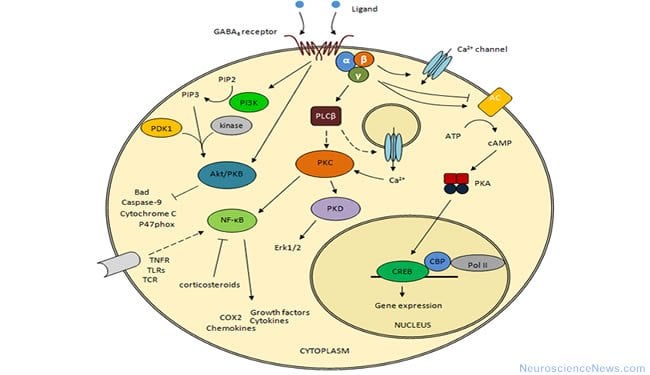Researchers in France and Sweden have discovered how one of the body’s own proteins is involved in generating chronic pain in rats. The results, which also suggest therapeutic interventions to alleviate long-lasting pain, are reported in The EMBO Journal.
Chronic pain is persistent and often difficult to treat. It is due, at least in part, to changes in molecular signalling events that take place in neurons, alterations that can ultimately disrupt the transmission of nerve signals from the spinal cord to the brain.
“We are fortunate to have a wide range of technologies that allow us to look more precisely at the molecular events that lead to the onset of chronic pain in animals,” said Marc Landry, lead author of the study and Professor at the University of Bordeaux. “Our results show that the levels of the naturally occurring protein 14-3-3 zeta are higher in the spinal cord of rats that have chronic pain. Moreover, we have been able to demonstrate how 14-3-3 zeta triggers changes in the signalling pathway that leads to the symptoms of chronic pain.”
The 14-3-3 zeta protein disrupts the interaction between the two subunits of the GABABreceptor, a protein complex found on the surface of nerve cells. GABAB receptors are G-protein coupled receptors, a family of receptors that regulate many physiological processes and which are frequently targeted for drug development.
The researchers used antibody labelling and microscopy techniques to investigate the molecular interactions of the signalling proteins. In cells and living animals, they were able to show that the 14-3-3 zeta protein interacts directly with the B1 subunit of the GABABreceptor. This interaction impairs the effective signalling of the receptor and limits the pain-relieving effects of the GABAB receptor under conditions of chronic pain.
The researchers also showed that the treatment of rats with a specific small interfering RNA (siRNA) or a competing peptide, molecules that interfere with the action of the 14-3-3 zeta protein, inhibited chronic pain.
“The impairment of the GABAB receptor by 14-3-3 zeta is a novel mechanism for the modulation of chronic pain,” said Landry. “We see potential in combining the use of inhibitors that interfere with the action of 14-3-3 zeta together with existing drug treatments like Baclofen for chronic pain. Targeting the GABAB dissociation process may be of therapeutic interest since it may allow classical pain killers to be more effective.”
Notes about this neuropathic pain research and article
Contacts: Barry Whyte – Head, Public Relations and Communications at EMBO
Yvonne Kaul – Communications Officer at EMBO
Source: European Molecular Biology Organization (EMBO) press release
Image Source: Neuroscience News image adapted from image shared in Wikimedia Commons by user ArnelH. Image is from ArnelH thesis and is licensed By ArneLH (Own work) with CC-BY-SA-3.0, via Wikimedia Commons. Use same license if using image.
Original Research: Full research paper for “Impairment of GABAB receptor dimer by endogenous 14-3-3 zeta in chronic pain conditions” by Sophie Laffray, Rabia Bouali-Benazzouz, Marie-Amélie Papon, Alexandre Favereaux, Yang Jiang, Tina Holm, Corentin Spriet, Pascal Desbarats, Pascal Fossat, Yves Le Feuvre, Marion Decossas, Laurent Héliot, Ulo Langel, Frédéric Nagy & Marc Landry in The EMBO Journal 12 June 2012; doi:10.1038/emboj.2012.161
Published online 12 June 2012
